
Preview Homophobia and the Culture Wars
HOMOPHOBIA AND1 T2HE CULTURE WARS 231 “The Senators Were Revolted”: Homophobia and the Culture Wars Jonathan D. Katz At the end of the summer, Andy and I were on the Eastern Shuttle, on our way to the Reagan’s state dinner for Ferdinand and Imelda Marcos. Interview magazine editor Bob Colacello on Andy Warhol1 It’s sometimes hard to remember that there was a time when avant-garde art and conservative politics were not sworn enemies in the United States, when no less a queer artist than Andy Warhol was invited for dinner at the Reagan White House but a few years after completing a painting series using urine and another of same-sex sex acts and male torsos. This was, of course, before the culture wars had made those two themes in particular – urine and male homosexuality – not only taboo, but, in the eyes of Jesse Helms, the vehicle for a resurgent power to define not just the arts but “morality” itself. But at one time – December of 1981 to be exact – Nancy Reagan, wife of Republican president Ronald Reagan, was on the cover of Warhol’s Interview magazine, with the issue itself including the first in-depth print interview granted by the First Lady since occupying the White House (she was interviewed by Warhol, editor Bob Colacello, and his new assistant Doria Reagan, Ron Reagan Jr.’s new wife). The same issue featured photographs of Robert Mapplethorpe out on the town, homoerotic photographs by George Platt Lynes, Herbert List, and even one by Edward Steichen depicting two bare-chested sailors, one inti- mately examining the other’s tattoo. There was also an illustrated interview with Prince, the singer provocatively posed as an upright, full-length odalisque in the shower, dressed only in a low cut thong with his pubic hair curling over, and a CTC-C12 231 27/01/2006, 11:38 AM 232 JONATHAN D. KATZ crucifix dominating the wall behind him. A nearly naked Prince and a crucifix, Nancy Reagan and Robert Mapplethorpe, all in Andy Warhol’s magazine – the battle lines for the coming culture wars had clearly not yet been definitively drawn.2 Eight years later, on June 12, 1989, Christina Orr-Cahall, director of the Corcoran Gallery of Art in Washington DC, cancelled the long awaited Mapplethorpe retrospective, The Perfect Moment, a few weeks before its opening and a few months after the photographer’s death from AIDS, firing off perhaps the single most resounding shot in the culture wars. By this point, conservative politics had become the sworn enemy of progressive art, and the National Endowment for the Arts (NEA) – the only federal-level funding body for the arts in the USA – was fighting for its life. Brilliantly manipulated as a polarizing wedge issue by the Christian right and the Republican-dominated Senate, the question of federal support for an art thematizing sexuality came to dominate a broader debate over whether state funding bodies such as the NEA were indeed the proper business of government at all. The NEA would shortly be forced to implement the so called Helms amendment, which imposed content restrictions on all art supported by the NEA while drastically cutting the agency’s budget. These content restrictions overwhelmingly turned on the question of the repre- sentation of sexuality, and homosexuality in particular was defined as inherently obscene. While the House would eventually temper some of the virulence of the Helms amendment, by the late 1980s a new era of highly politicized art making and art exhibiting had been launched in the US. The term avant-garde was derived in the nineteenth century from the French term designating the front lines in a military conflict – and thus served to highlight the modernist ideal of the most innovative artists forging ahead of mainstream culture to shift ways of seeing and thinking.3 In the late 1980s and early 1990s, the avant-garde in America returned to its etymological roots, becoming a significant player – perhaps even the significant player – in the cultural contestation that became the chief political issue of the twilight of the Reagan administration and that of George Bush Sr., the latter only a slightly modified version of Reaganism in terms of domestic policy. But, as indicated in the example of the 1981 Interview issue described above, at the beginning of the Reagan era art and politics were but ships passing in the night, the art world by definition rarely connected to overt political activity. This is not to say that there was no political art – on the contrary; the visual art practices that domi- nated the US art world in the 1980s were often vociferously opposed to Reagan and the ideologies of the political right his administration represented and put into policy. It is to say that the world of conservative politics as yet saw little instrumentality in the manipulation of that art or its particular circuits of exhibi- tion and dissemination and so ignored it. This chapter, then, seeks to explore how art and politics leaped from wary cooperation (Colacello tells us that Nancy Reagan agreed to the Interview piece because the White House felt it would help her image with younger voters) to CTC-C12 232 27/01/2006, 11:38 AM HOMOPHOBIA AND THE CULTURE WARS 233 a bitter divorce. It asks the questions of why the culture wars came about and why they happened when they did. National Political Background I’m not quite sure what it says about America that one of the most intense public controversies in the months between the Tiananmen Square massacre and the breaching of the Berlin Wall had to do with homoerotic photographs and a crucifix suspended in a vat of urine. Representative Henry Hyde, Republican of Illinois, “The Culture War,” National Review April 30, 1990 Hyde’s too glib formulation points to knowledge repressed in drawing the reader’s attention to the relationship between the fall of the Communist regimes in the East and the onset of the culture wars. For Anthony Lewis of the New York Times, however, the relationship between the fall of communism and the American culture wars was far from repressed: “There is a particular irony in the attempt to arouse a repressive American attitude to the arts at this time. We are cheering Eastern Europe’s liberation from Communism – a liberation marked by freedom for literature and the arts.”4 The late 1980s were hard times for the Republicans, and the fragility of its governing coalition – so powerfully soldered though the populism of Ronald Reagan in the early and mid 1980s – was increasingly exposed through the less-rousing ministrations of George Bush Sr. (in office from 1988 to 1992). The Christian Right was rocked by the sex scandals of two of its most prominent leaders, Jim Bakker and Jimmy Swaggart, while the memory of the Reagan years as an unblemished time of optimism and “family values” was besmirched by the continuing investigation into the Iran Contra scandals. The economy was shaken by the widespread collapse of the savings and loan industry, including the failure of a savings and loan under the leadership of Neil Bush, the President’s son. Budget deficits were high, while a naked skepticism in government for the common good was succinctly captured by the ubiquitous bumper sticker reading: “Whoever dies with the most toys wins.” Certainty and constancy seemed in short supply, while economic, polit- ical, and religious scandal bloomed amidst the spiraling death toll of the AIDS plague.5 Culture wars were, from the perspective of the Right, in part a welcome diversion from the bad news of the day. No wonder Daniel Patrick Moynihan, Democratic Senator from New York, was led to ask in early 1989 what would supplant the Communist East as the embodiment of evil in American eyes.6 He would have his answer by that summer, as the Mapplethorpe controversy began to boil over. Moynihan’s query, born of an historian’s interest in American politics, recognized the degree to which the absence of a foreign conflict tended CTC-C12 233 27/01/2006, 11:38 AM 234 JONATHAN D. KATZ to lead the right toward an increasingly aggressive policing of the domestic sphere in an attempt to solidify its power, for the right’s central discourse of defensive containment has long required threatening “others” to define itself against. This was most spectacularly the case following American victory in World War II, with the subsequent rise of McCarthyism during the cold war.7 Indeed, in an eerie foreshadowing of the late 1980s, the policing of the arts (albeit largely the performing arts and film) through the blacklist and a con- comitant federal crackdown on gays and lesbians throughout the so-called Lavender scare had been central tenants of cold war-era McCarthyism. Though the fall of Communist regimes may have in part ignited a search for new enemies against whom a mythic American consensus could be constructed and antagonized, the culture wars were by no means exclusively a cynicalattempt to shore up a crumbling Republican coalition. And they didn’t work as such either, as sociologist Steven Dubin notes: “From mid August to early October 1990 – a period when the debate over government sponsorship of the arts was especially heated – Mr. Bush’s approval ratings fell fourteen percentage points.”8 If the goal was exclusively political popularity or the consolidation of political power, art bashing was lousy strategy. In fact, it wasn’t really art in itself that the conservative wing of the Republi- can party and its Christian fellow travelers were after, but rather that which the art came to denote or stand in for. The culture wars were thus in large part a direct response to a new player on the political scene, one that had come to signify as Moynihan’s embodiment of evil – a newly militant gay and lesbian community. The same year in which Moynihan wondered about the new evil, Representative William Dannemeyer of California, a leading right-wing ideologue, published a book called Shadow in the Land: Homosexuals in America, which included this striking claim: “Currently we are a divided nation. Such a division has not existed in America since the Civil War.” For Dannemeyer, the division was between an upstanding, moral citizenry living by Christian values and “the homosexuals,” who increasingly endangered family values by seeking to over- turn the rule of Christian morality. He argued that the only way to heal this painful divide was to “[r]einstate traditional prohibitions against homosexuality in order to establish a sense of order and decency in our society, to reconnect us with our normative past.”9 On June 23rd of this same year, Senator Jesse Helms of North Carolina said on the Senate floor, “Mr. President, some days I decide that things cannot get any worse, but then they do. The U.S. Postal Service took a big step this week to accommodate the perversion. Tomorrow and Sunday, June 24 and 25, several post offices in New York City will issue a postmark to ‘honor’ Gay and Lesbian Pride Week....The homosexuals are in a battle against American values.”10 While in fact all the Postal Service proposed to do was set up a six- foot table to issue commemorative cancellations at a temporary “Stonewall Station” near the site of the Stonewall Riots (the 1969 bar riots that launched the modern gay liberation movement) on their twentieth anniversary, the intent CTC-C12 234 27/01/2006, 11:38 AM HOMOPHOBIA AND THE CULTURE WARS 235 of the martial language is clear. Helms, like Dannemeyer, had himself declared war against the Lesbian/Gay/Bi/Trans (LGBT) community.11 Since the late 1980s, then, the phrase the culture wars has become a kind of shorthand for describing that particular constellation of forces introduced here: the Christian right political agenda, more moderate Republican appease- ment, the National Endowment for the Arts, the cultural avant-garde, the gay and lesbian rights movement, and AIDS activism – which resulted in a policing of the visual arts not dissimilar from the policing of the popular arts under McCarthyism. In assessing as accurately as possible the exact alchemy of this particularly volatile mix, it is important not to lose sight of its newness. The political and discursive force of the culture wars is such that it seems impossible in retrospect to imagine how it came to pass that Robert Mapplethorpe secured an NEA grant under the Reagan White House in 1984, a mere five years before the controversy erupted.12 But in the 1970s and early 1980s support for expressly homoerotic photo- graphy was hardly unusual, as the NEA had previously supported edgy, distinctly homoerotic work by photographers as diverse as Arthur Tress, Joel-Peter Witkin, and Larry Clark without complaint. Indeed, in 1978 an NEA-funded gallery in San Francisco, 80 Langton Street, rescued Mapplethorpe by agreeing to show the very S/M pictures that a commercial San Francisco gallery had recently rejected, and which would figure as among the most objectionable during the Perfect Moment scandal. Years later, Mapplethorpe remarked in terms now thick with irony, “I got the Curator at Berkeley interested in my sex pictures and he helped me to find one of these free spaces, Langdon [sic] Street, which exist through the National Endowment of the Arts, they don’t have restrictions.”13 The mid to late 1980s saw a new kind of homophobia, more active and virulent than the casual homophobia of an earlier era. Indeed, in certain urban circles, a mere five years before, homophobia had seemed increasingly a thing of the past, as gay and straight artistic and popular cultures found greater and greater commonality. Studio 54, the epicenter of Manhattan’s druggy nightlife scene in the 1970s, had been in part premised on a refusal of such categorical divisions. “[E]veryone wanted to go to Studio 54 not because it was gay, but because it broke down all the old-fashioned barriers between gay and straight, young and old, rich and poor...‘A tossed salad’ is what Steve [Rubell – a co- owner], always said he wanted it to be, and that’s what it was.”14 It was entirely possible to find Margaret Trudeau, estranged wife of the Canadian Prime min- ister, dancing on the ground floor while groups of gay men enjoyed public sex on the balcony above. Indeed, the general rapprochement between straight and gay cultures was widely evidenced in disco, and, as with Studio 54, groups as diverse as the Village People and Two Tons of Fun played with gay stereotypes to mainstream success. Sylvester, a flamboyantly gay cross-dressing disco singer, dominated the disco charts and Bette Midler once proudly proclaimed her origins as a gay bathhouse chanteuse. When an old gay bathhouse in New York, CTC-C12 235 27/01/2006, 11:38 AM 236 JONATHAN D. KATZ the Continental Baths, became Plato’s Retreat, a giant sex club for straights, it simply underscored the new mingling of gay and straight sexual culture – and Warhol, especially through his Interview magazine, became its Boswell.15 Thus the 1970s’ increasingly open, legible culture of unapologetic same-sex sexuality in fact catalyzed not stringent policing but precisely its opposite, a general loosening of proscriptions – cultural and legal. Bathhouses and sex clubs flourished openly, queer sexually-explicit films dominated the underground film world, and not least, gay ghettos and their attendant cultural reorientations and revisions – sartorial and political – began to be felt in major urban population centers. The more the gay community insisted on its own dissident cultural visions and beliefs, the more they were simply picked up and commodified as lifestyle indicators by a common cultural machinery invested in the next trend. As a result, gayness became cool in a way it hadn’t been before. Another way of putting this is to say that an increasingly essentialized notion of gay communal identity, instead of politicizing the broader public’s conception of sexual iden- tity, was producing its converse, a de-essentialized vision of gayness as a matter of cultural exchange, of style – sexual, sartorial, and otherwise. Despite setbacks such as Anita Bryant’s highly publicized roll-back on gay civil rights in Florida, the decade that ended with the election of Ronald Reagan overall saw an enor- mous increase in visible gay culture, with comparatively little backlash. What, then, revitalized this rapidly dissipating homophobia in the early 1980s, and once again put Nancy Reagan and Robert Mapplethorpe at odds? In a word, AIDS. The very discourse of a divided nation that Dannemeyer employed at the end of the decade was embraced to horrific effect almost as soon as AIDS, tellingly first named GRID or Gay Related Immune Deficiency Syndrome, first presented in the gay communities of New York and San Francisco. The division, embraced both actively and passively, was between those who were deemed “at risk” for AIDS, and those who falsely assumed the plague would never touch them, or more hideously still, who welcomed it as the “natural” consequence of gay men’s and/or drug users’ lives. As Gary Bauer, Reagan’s assistant, told the television show “Face the Nation” in 1987, the reason the president had not even uttered the word AIDS publicly until late in 1985 was due to the fact that “[i]t hadn’t spread into the general population yet.” Here “general population” is more than a marker for heterosexual non-IV drug users; it is a quite specific indicator of the politics of inclusion and exclusion animating the right’s response to AIDS. For a not insignificant part of Bauer’s “general population,” AIDS hideously concretized still circulating stereotypes of homosexuals, linking them to con- tagion, the seduction and corruption of youth, sexual excess, pathos, and early death. Now it was claimed that homosexuality, once merely repugnant, was in fact lethal, and the repression of GLBT civil rights was recast as a public health issue. Jesse Helms repeatedly and aggressively sought to twin homosexuality with AIDS – from his 1987 call for the federal quarantine of the HIV positive, to his 1989 amending of a federal AIDS bill that outlawed any educational CTC-C12 236 27/01/2006, 11:38 AM HOMOPHOBIA AND THE CULTURE WARS 237 materials which could be taken to “promote, encourage, or condone homo- sexual sexual activities.” In an exceptionally clear instance of his regular confla- tion of homosexuality with AIDS, Helms said on the Senate floor on June 23, 1989, “Mr. President, instead of denouncing the homosexual ‘lifestyle,’ count- less politicians, some in this Chamber, fall in line with a repugnant organized political movement – and that is what it is – attempting to persuade the Ameri- can people that this is a desirable way to conduct their lives....In the mean- time, thousands more in this country will continue to die from AIDS while the homosexuals continue to proclaim the virtues of their perverse practices.”16 Conflating the blood-borne transmission of AIDS with vastly more contagious infections, he remarked defensively, “We used to quarantine for typhoid fever and scarlet fever, and it did not ruin the civil liberties of anybody to do that.”17 Culture wars The active, hot phase of the culture wars began in April 1989 when Donald Wildmon, founder and director of the American Family Association and a long time advocate for conservative Christian censorship in mass media, circulated what he claims were a million copies of a letter denouncing Andres Serrano’s 1987 Piss Christ as anti-Christian bigotry. The Christian right itself was a fairly new phenomenon at this moment, and Wildmon’s activities originated barely a decade earlier, when, offended at what he took to be excessive sex and vio- lence on TV, he began a successful strategy of pressuring sponsors to withdraw from programs he deemed offensive. He founded the National Federation for Decency in 1977, later changing the name to the far more strategic (and less censorious sounding) American Family Association once he hit on his hard-to- impeach tactic of protest in the name of “family values” and defenseless chil- dren. Seeking to control public discourse through appeal to governing authorities on such “moral” grounds proved to be a brilliant way of transforming a numer- ically small demographic into an overwhelming pressure group – and it was precisely this tactic that Helms borrowed and introduced into the culture wars. By 1981, Wildmon had teamed up with Jerry Falwell of the far larger Christian- Right political lobby called the Moral Majority in a short-lived alliance, and by mid decade he had hundreds of local affiliates and had raised millions of dollars. Indeed, in 1989, the year he secured the ear of the Senate and thus the nation, AdWeek Magazine named him “Marketer of the Year.”18 Clearly the emergence of the Christian right as a political force, and the idea that a narrowly interpreted vision of Christian ethics should be the sole arbiter of legislative merit, was born of the same forces that gave rise to the culture wars. In Wildmon’s hands Piss Christ was anti-Christian, a sentiment echoed by Republican Senator Alfonse D’Amato of New York. D’Amato then carried the controversy to public attention by tearing up a catalog featuring Piss Christ on the Senate floor. But Helms took D’Amato’s issue and married it to his own, CTC-C12 237 27/01/2006, 11:38 AM 238 JONATHAN D. KATZ more winnable strain of homophobic obsession, transforming Piss Christ into a visual exemplar of post-AIDS fears about “bodily fluids” and the attendant orifices of their emergence. D’Amato, in short, handed Jesse Helms an issue he could make his own, and the latter’s already ignominious record of anti- gay attacks assured a ready audience for the fireworks. Piss Christ was the per- fect object for Helms’ attacks, visualizing as it does the unholy alliance of (homo)sexuality and religion that Helms could productively wield as needed in advancing the avalanche of events that came to include the cancellation of Mapplethorpe’s ironically entitled retrospective, The Perfect Moment. Exemplify- ing the pervasiveness and influence of Helms’ rhetoric, in 1990, the president of the Massachusetts chapter of Morality in Media observed upon the opening of The Perfect Moment in Boston, “[p]eople looking at these kinds of pictures become addicts and spread AIDS.”19 Here, succinctly realized, was the crux of the issue, a stunning series of elisions now yielding the horrifying equation art=gay=AIDS. No surprise, then, that the day The Perfect Moment opened in Cincinnati, the museum and its director were charged under pornography and child porno- graphy statutes, all for exhibiting coolly formal and classicizing male nudes and a portrait of an eight-year-old that had been taken on the explicit request of his mother.20 While artists who are not gay or lesbian were certainly caught up in the culture wars – Karen Finley and Andres Serrano most prominently – the legislative and legal consequences of the new restrictions on the arts turned on homophobia, and even these artists were made “queer.” In his book on the culture wars, Dubin notes, “[m]any artists confirm that they knew the original targets were all gay and lesbian, and that Finley was moved into the condemned category only belatedly as a result of [a] negative newspaper column.”21 Indeed, this conflation of the avant-garde with homosexualities is one of the most salient aspects of the late 1980s culture wars, a clue toward what was at stake. Nor should this ascription of a generalized queerness in the homophobic attacks on the arts surprise us for displacement, at least in its original, Freudian formula- tion, was a central aspect of all phobias.22 The debate on NEA funding in the Senate helped cement the conceptual slippage between art, homosexuality, and AIDS, the terms “infecting” one an- other with unchecked discursive promiscuity. When the AIDS activist coalition Gran Fury sought permission to put up posters on Chicago’s buses, a city alderman tried to block the move, saying it was “directed at children for the purposes of recruitment.”23 As a result of this AIDS awareness campaign, the Illinois State Senate passed a sweepingly homophobic bill prohibiting “physical contact, within a carnal, erotic, or sexual context, by members of the same sex in advertising on vehicles that carry individuals under 21.”24 Again and again Helms hammered away at the essential equivalency of art, homosexuality, and AIDS, reanimating, zombie-like, the corpse of Robert Mapplethorpe to bear his message. How else can we explain the Washington Times journalist Richard Grenier’s fantasy of dousing Mapplethorpe’s corpse in CTC-C12 238 27/01/2006, 11:38 AM HOMOPHOBIA AND THE CULTURE WARS 239 kerosene and setting it alight?25 The melding of art, homosexuality, and AIDS into that singular homophobic node which derailed The Perfect Moment isperhaps most succinctly captured by this typically un-nuanced Helmsian Senate floor oratory: “It is an issue of soaking the taxpayer to fund the homosexual pornog- raphy of Robert Mapplethorpe, who died of AIDS while spending the last years of his life promoting homosexuality.”26 In a catechism eerily reminiscent of the “commie, pinko fag” terminology of the 1950s, here we can once again glimpse the ideological work the homosexual has long been called upon to do for the right in constituting a pervasive domestic threat just as foreign threats recede. Despite the explicit and repeated homophobic dimension to this controversy, the arts establishment was at pains to recast and contain the Mapplethorpe debate from a dangerous public referendum on homosexuality into a less off- putting narrative of a group of country bumpkins presuming to talk about art, all the while in service to naked political haymaking. Even as they attacked the Corcoran’s cancellation of the exhibit, for example, the Washington Post’s edito- rial board denied that homophobia was a significant factor. And the National Gallery’s celebrated director J. Carter Brown furthered the ideological isolation of Mapplethorpe in advocating a politically astute division between the gay subject matter of the photographer’s work and the civil rights implications of its censorship: “We have to keep the first amendment rights apart from the controversy.”27 Tellingly, Helm’s grandstanding about the NEA was almost identical to his successful theatrics a year before, which resulted in the amending of a huge AIDS research and education bill to “[p]rohibit the use of funds provided under this Act to the Centers for Disease Control from being used to provide AIDS education information, or prevention materials and activities that promote, encourage or condone homosexual activities or the intravenous use of illegal drugs.”28 Despite the fact that the amendment thus explicitly prohibited addressing risk reduction for the two populations most affected in their own terms, the amendment passed 94 in favor and but two – Senators Weicker of Connecticut and Moynihan of New York – against. In securing that lopsided victory, Helms pioneered the instrumentalization of the “homo-visual” – the mobilization of representations of same-sex sexuality which assumed spectatorial disgust, and which he would exploit to even greater effect a year later. Accord- ing to his own report in the Congressional record, Helms “received a copy of some AIDS comic books that are being distributed by the Gay Men’s Health Crisis, Inc. of New York City, an organization which has received $674,679 in Federal dollars for so-called AIDS education and information. These comic books told the story, in graphic detail, of the sexual encounter of two homo- sexual men.”29 He then goes on to report that having obtained a copy of the book, he made additional copies for 15 or 20 Senators. “I sent each of the Senators a copy – if you will forgive the expression – in a brown envelope marked ‘Personal and Confidential, for Senator’s Eyes Only.’ Without excep- tion, the Senators were revolted...”30 CTC-C12 239 27/01/2006, 11:38 AM 240 JONATHAN D. KATZ He repeated this “brown envelope” stratagem a year later during the Mapplethorpe debates, but when the House/Senate Compromise Committee showed signs of weakening resolve in supporting Helm’s amendment to the NEA appropriation, he felt sure that simply showing them Mapplethorpe’s work would carry the day and – ordering the pages and “ladies” out of the chamber – proceeded to do so. Once again, the mere sight of same-sex sexuality was assumed to be sufficiently repugnant to catalyze opposition without need for rational argumentation. Art=Gay=AIDS Some 13 years after the culture wars, Richard Woodward of the New York Times could write in a review, “[i]t would be salutary to determine in what ways, if any, Mapplethorpe...should be considered [a] political artist...”31 A sanguine index of how far we’ve come since the late 1980s, this query is also an index of what we’ve lost, not least the inherently political dimension of an unapologetically gay art. From the start of his career, Mapplethorpe deliberately sought to frame his own sexuality, to put on a pedestal (sometimes literally) images that refused legibility outside of the context of an explicit gay male subculture. In deliber- ately foreclosing other interpretive matrices, Mapplethorpe was opposing the “gay” art of his day, which instead tended to work toward a multivalence that allowed it to accrue signification far outside the gay cultural nexus of its origins. For example, an artist like Warhol may have secured gay men from Studio 54 to urinate on his canvases in the “oxidation paintings” of 1977, but, despite the resulting images’ sardonic commentary on Protean Pollock myths, these “piss” paintings bear few traces on their elegantly abstracted surfaces of the damp truth of their facture. And Keith Haring’s trademark cartoonish elegance was almost definitionally anti-narrative despite its easy legibility. Indeed, a serious student of gay postmodernist approaches to meaning like the cut-up techniques of William S. Burroughs, Haring deliberately sought to camouflage his authorial voice, even if the homoeroticism of the imagery is unmistakable. He reports that in the early 1980s, when he was doing his infamous subway drawings, people would constantly ask him what they meant, what he was trying to say. Seeking to avoid the question, but not wanting to appear rude, Haring devised the strategy of smilingly handing out a button with his signature radiant baby image, but saying not a word.32 My point is that the gay art of Mapplethorpe and the subsequent artists caught up in the culture wars was of a profoundly different sort than the gay art of Warhol or early Haring (late Haring grew more and more explicitly political), or their spiritual forbearers Robert Rauschenberg, Cy Twombly, and Jasper Johns. Broadly postmodernist, this latter, closeted generation, coming of age amidst the virulent homophobia of McCarthyism, produced an art that was made (imperfectly) discontinuous with their authorial identity in a heads down, CTC-C12 240 27/01/2006, 11:38 AM
Description:The list of books you might like

Rich Dad Poor Dad

Do Epic Shit

Can’t Hurt Me: Master Your Mind and Defy the Odds

Mind Management, Not Time Management

The Princess and the Goblin
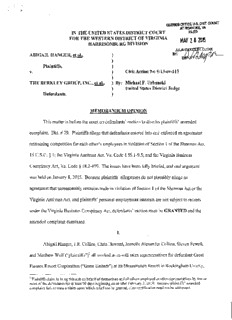
BY: / DL ABIGAIL HANGER, et al.
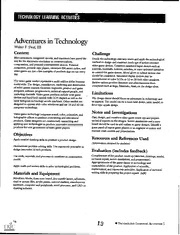
ERIC ED381386: Technology Learning Activities I.
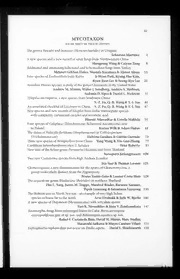
Mycotaxon 2006: Vol 96 Table of Contents

Ocio humanista: dimensiones y manifestaciones actuales del ocio
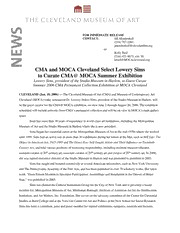
Exhibition - CMA@MOCA

IFRS 15 investment management companies
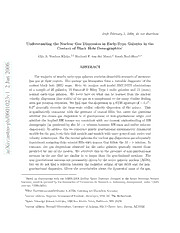
Understanding the Nuclear Gas Dispersion in Early-Type Galaxies in the Context of Black Hole Demographics
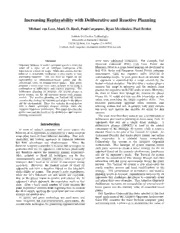
DTIC ADA459203: Increasing Replayability with Deliberative and Reactive Planning

ERIC EJ1066699: Marla Rules

Parent-Infant Psychodynamics: Wild things, Mirrors and Ghosts

Cyber Security Applications for Industry 4.0
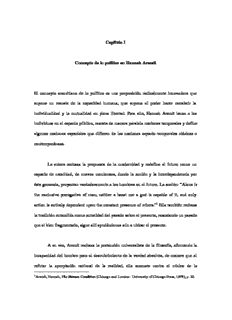
Capítulo 1. Concepto de lo político en Hannah-Arendt

iOS 10 Swift Programming Cookbook
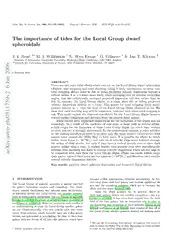
The importance of tides for the Local Group dwarf spheroidals
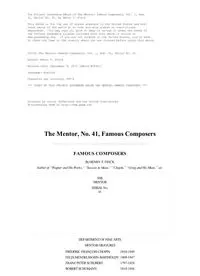
The Mentor No 41 Famous Composers by Henry T Finck

Die Freiheit der Meere und der Künftige Friedensschluß

Greek Government Gazette: Part 7, 2006 no. 733
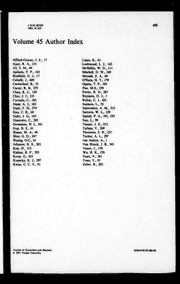
Journal of Economics and Business 1993: Vol 45 Index

